
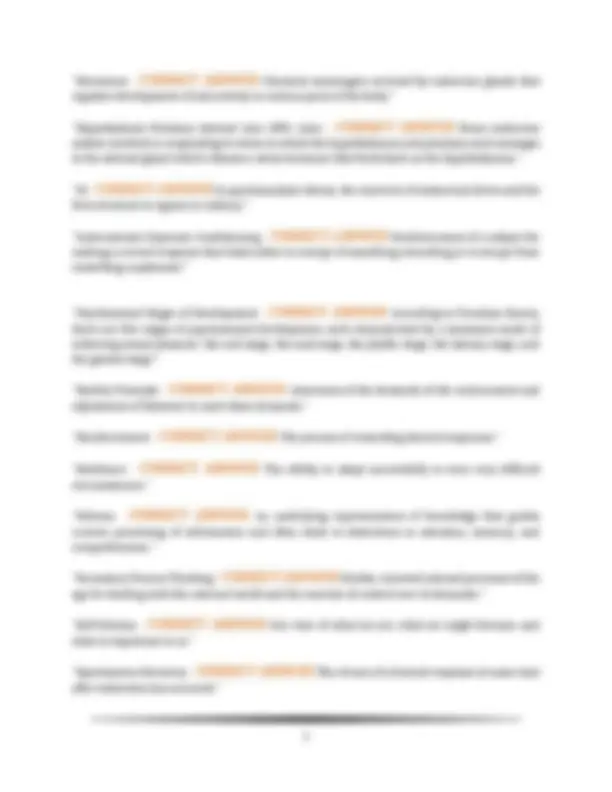
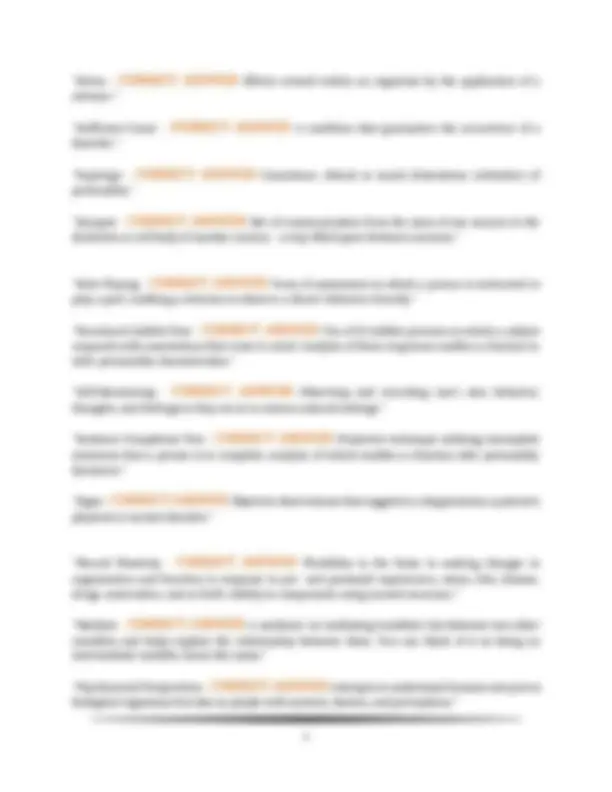
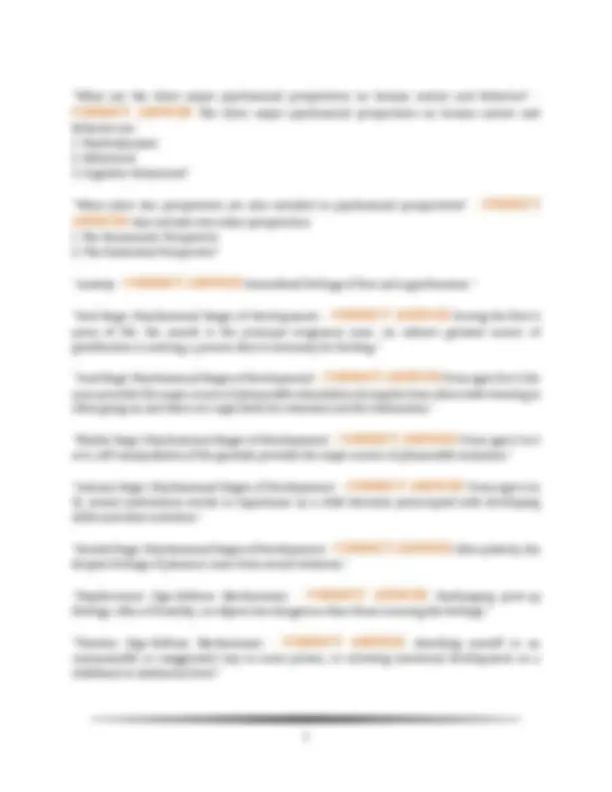
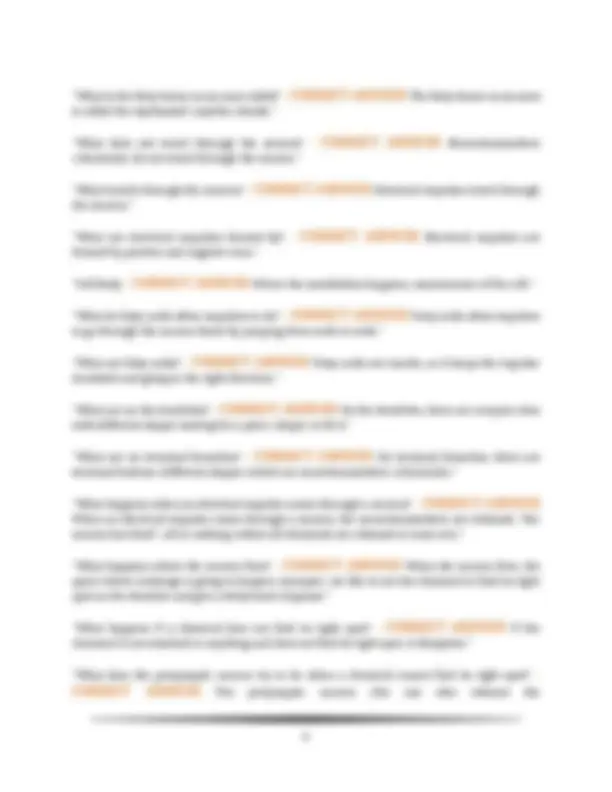
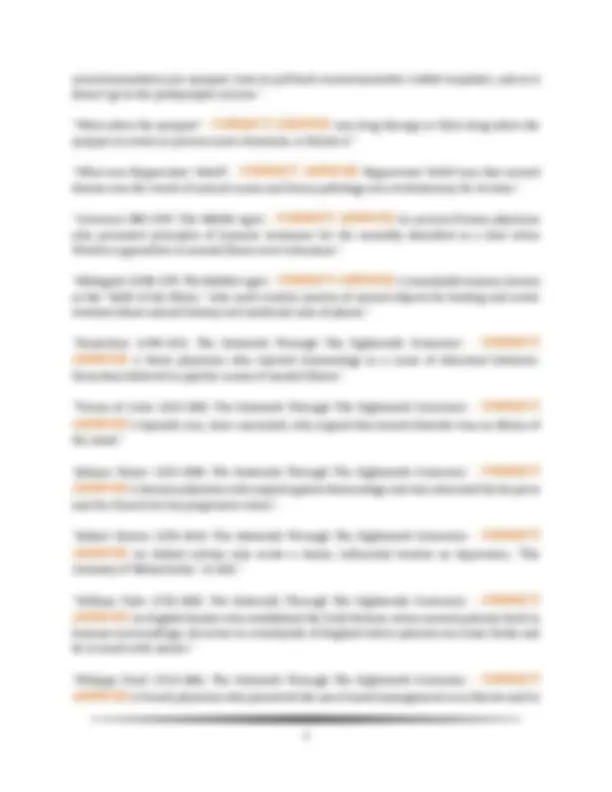
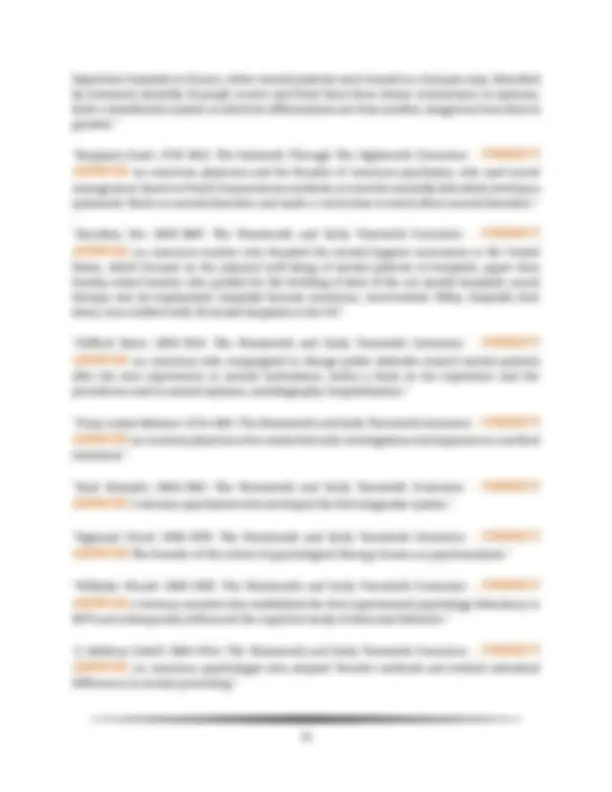
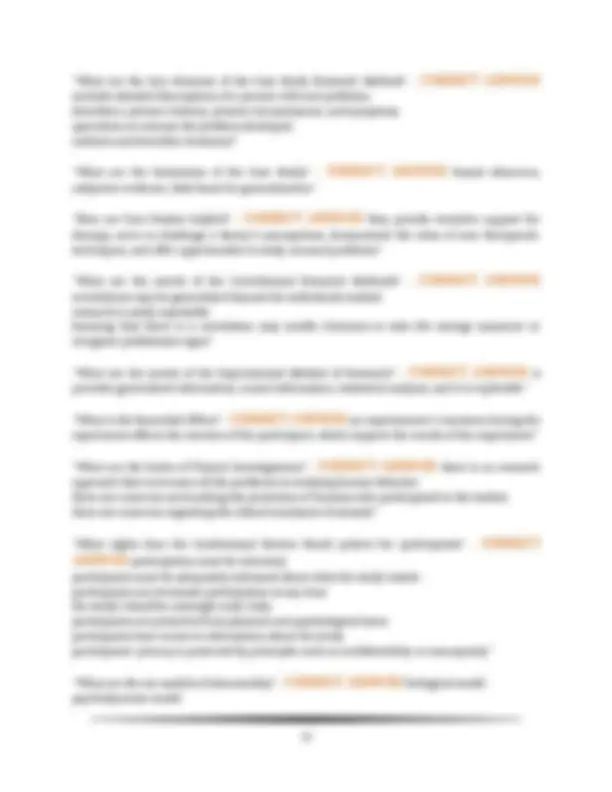
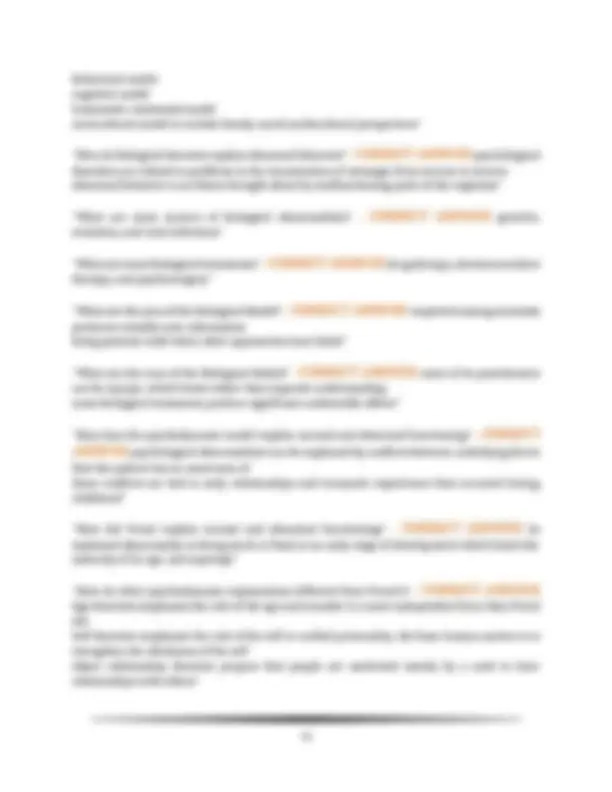
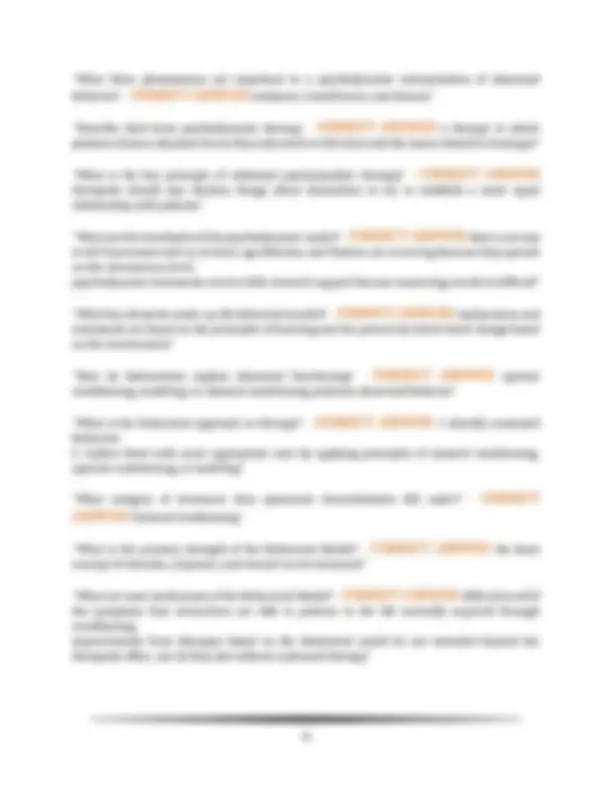
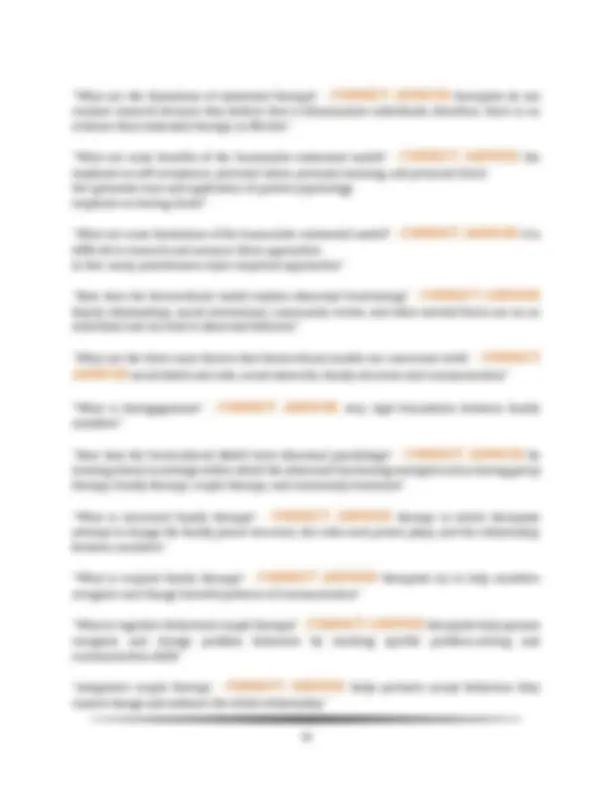
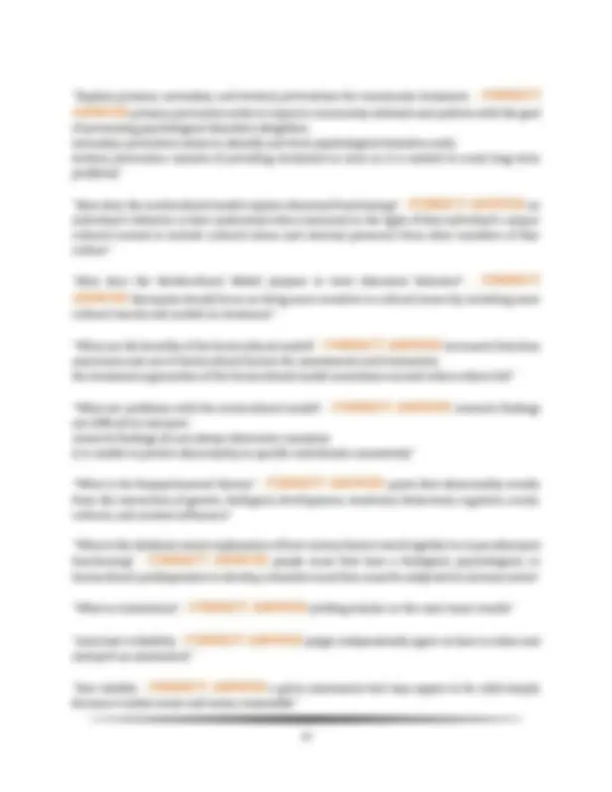
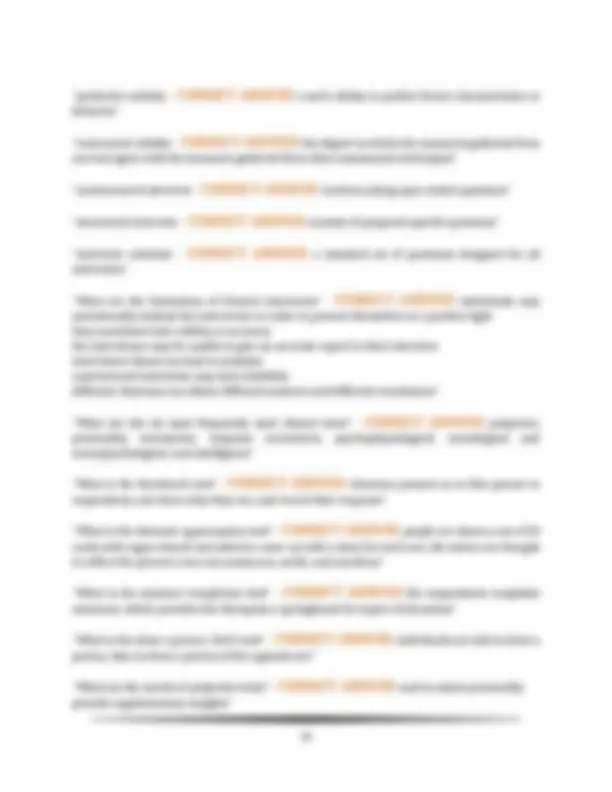
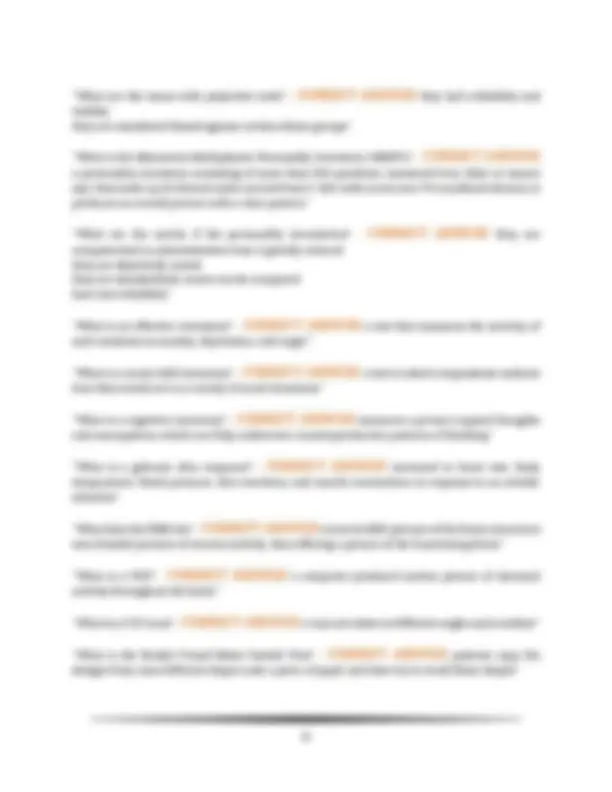

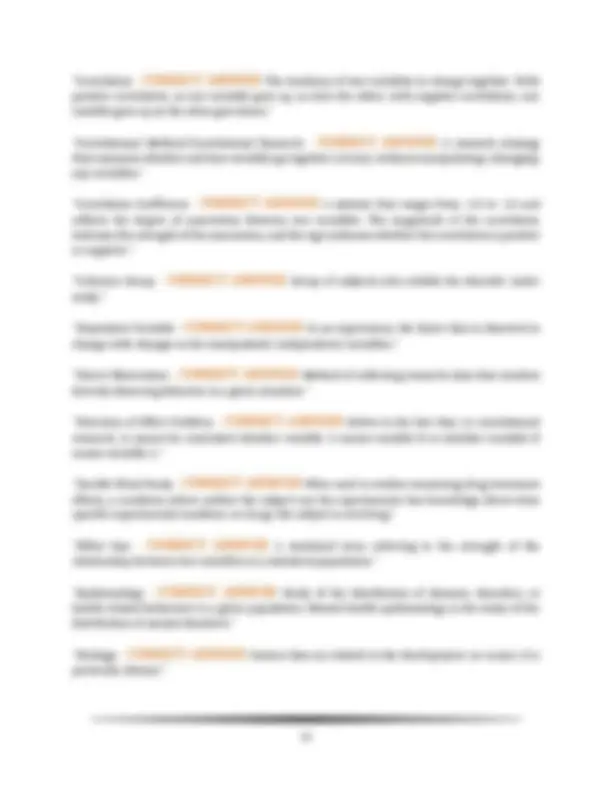
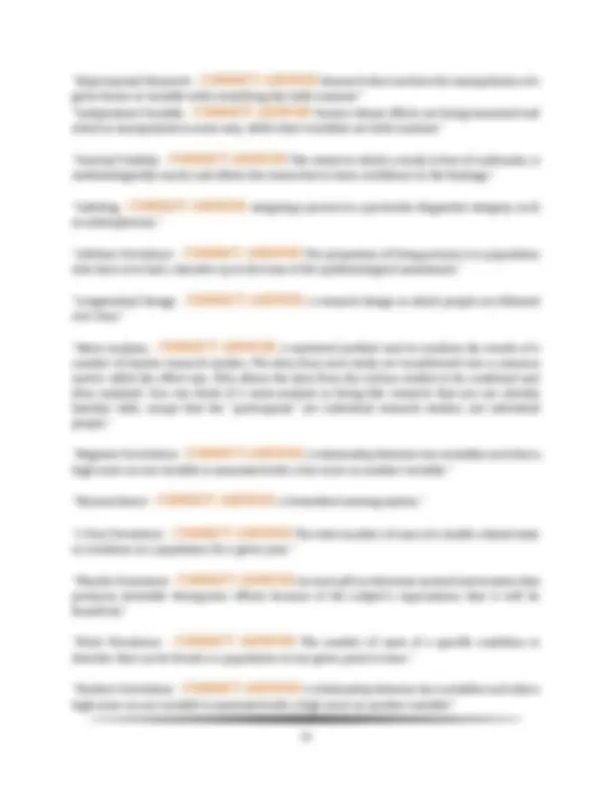
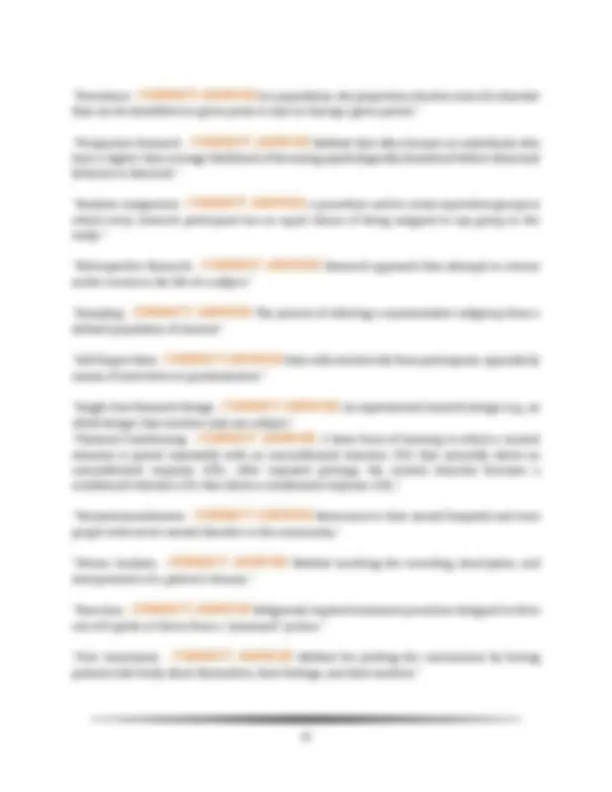
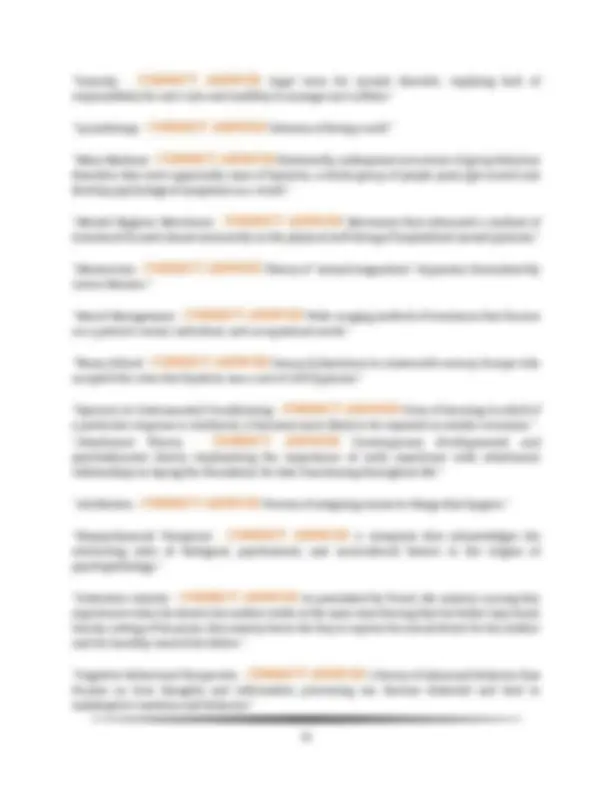
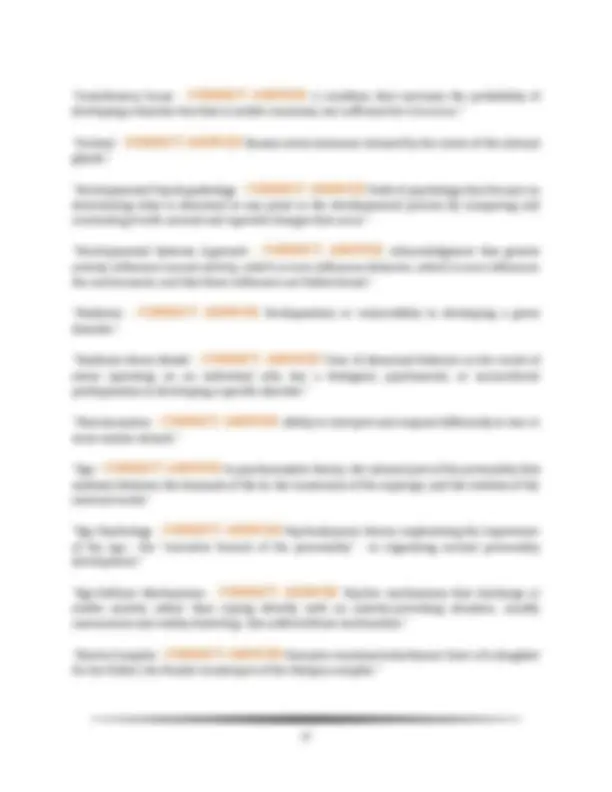
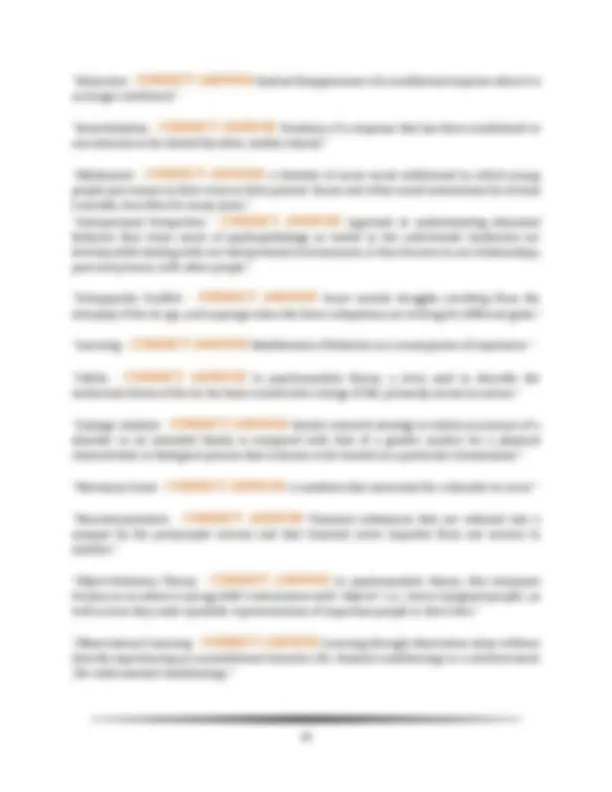
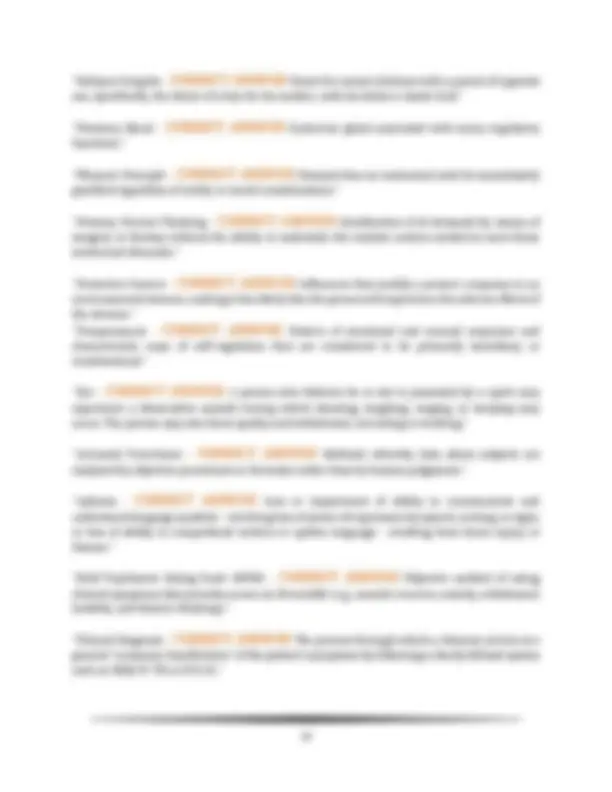
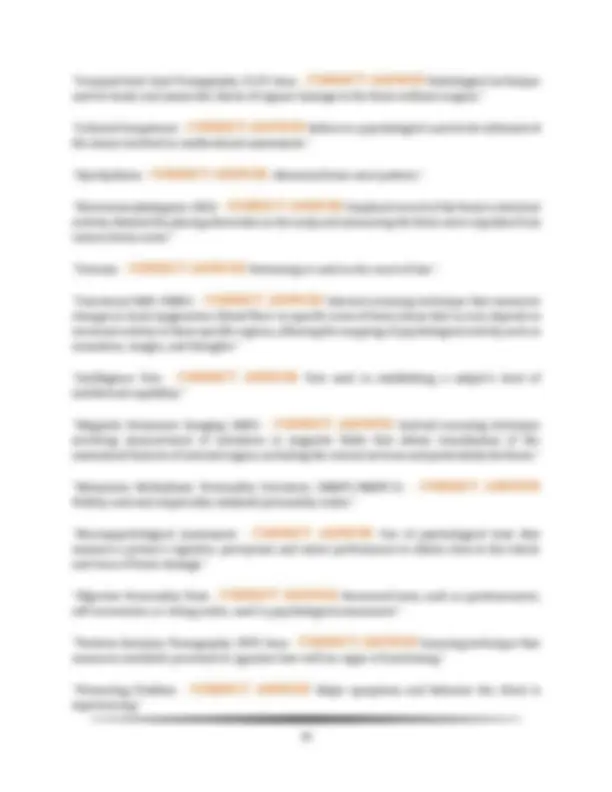
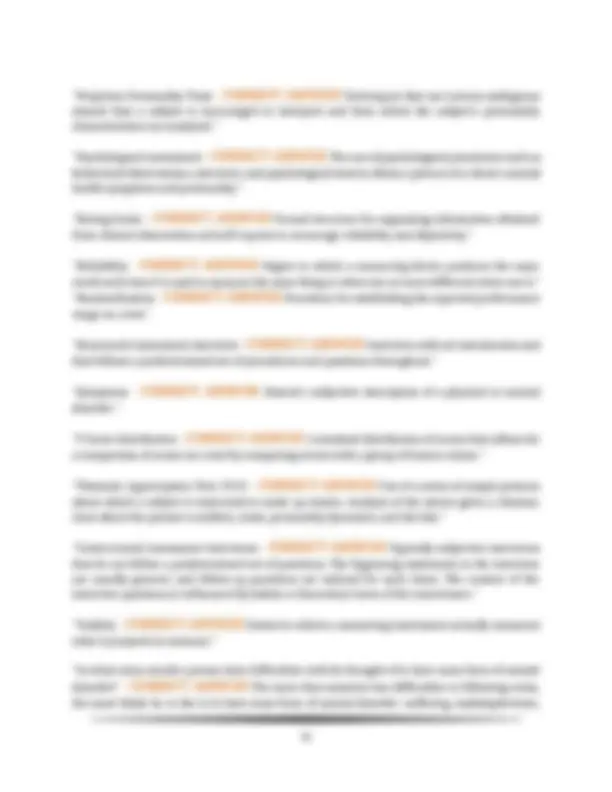
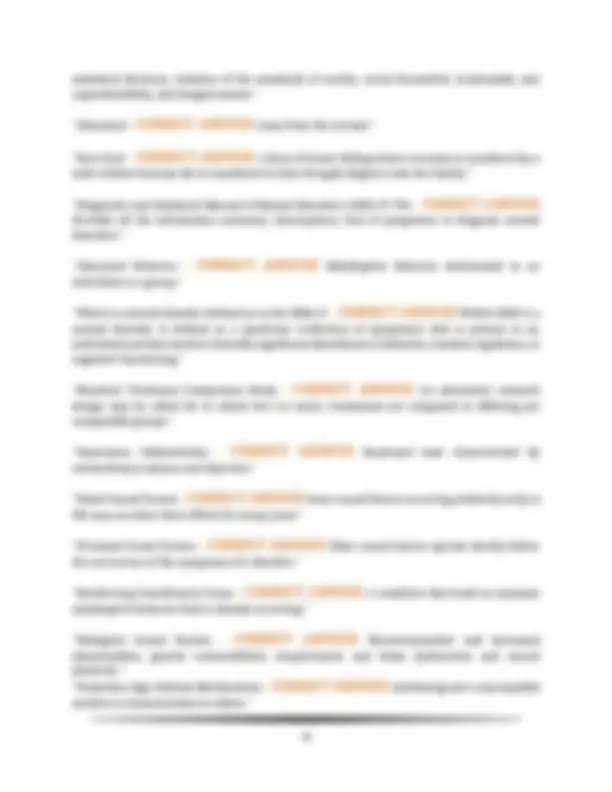
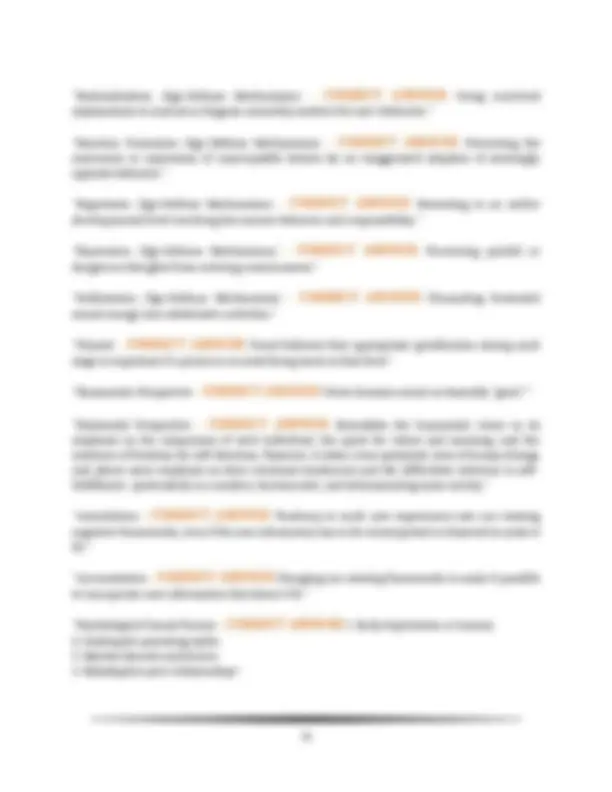
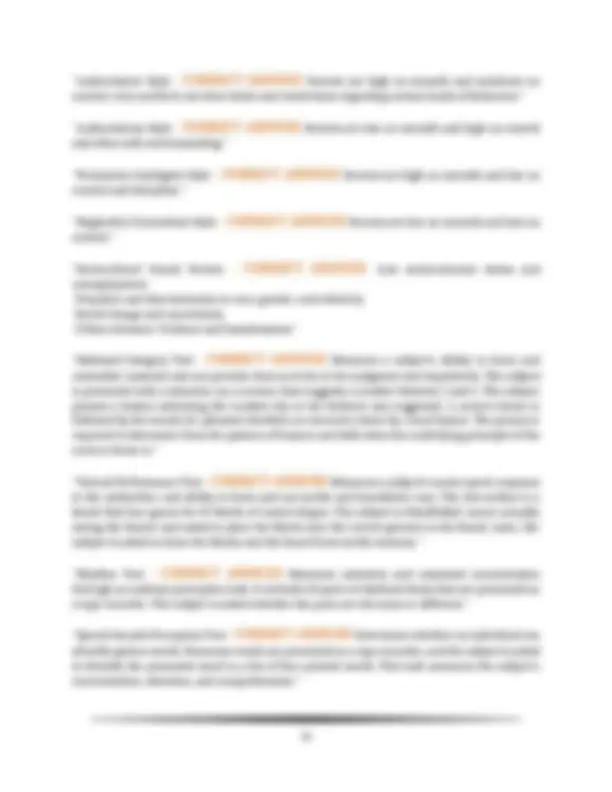
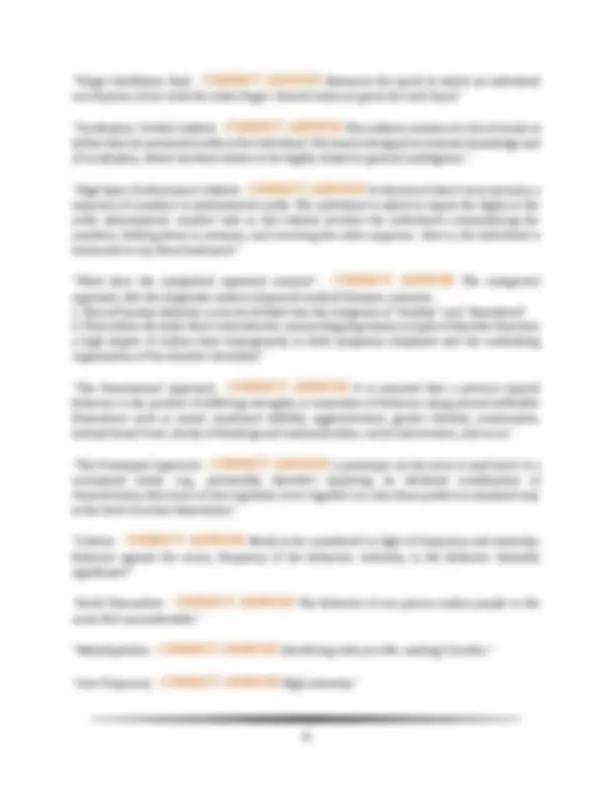
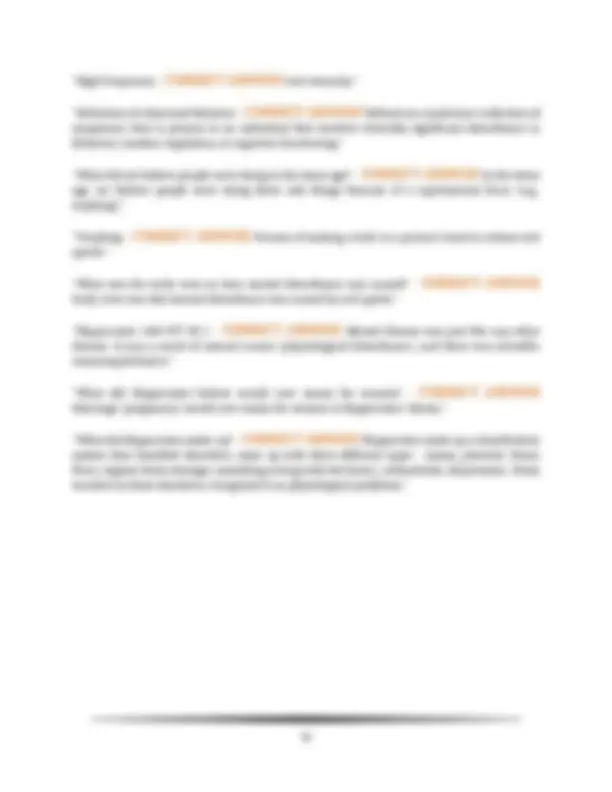


Study with the several resources on Docsity

Earn points by helping other students or get them with a premium plan


Prepare for your exams
Study with the several resources on Docsity

Earn points to download
Earn points by helping other students or get them with a premium plan
Community
Ask the community for help and clear up your study doubts
Discover the best universities in your country according to Docsity users
Free resources
Download our free guides on studying techniques, anxiety management strategies, and thesis advice from Docsity tutors
EXAM #1: ABNORMAL PSYCHOLOGY - CHAPTERS 1-4 QUIZ QUESTIONS WITH 100% CORRECT ANSWERS
Typology: Exams
1 / 36

This page cannot be seen from the preview
Don't miss anything!





























wherein a baseline period (A) is followed by a treatment (B). To confirm that the treatment resulted in a change in behavior, the treatment is then withdrawn (A) and reinstated (B)."
assessment, treatment, and prevention of abnormal behavior."
intense symptoms (short in duration)."
the conditions hypothesized as leading to abnormality."
and expectations that influence the observations he or she makes in the research study."
are relevant to other populations, contexts, or times."
disorders within a given family. Family aggregation may arise because of genetic or environmental similarities."
can be used to draw conclusions about other samples."
that is tested in an experiment; may be refuted or supported by experimental results but can never be conclusively proved."
population."
finding could have occurred by chance alone."
about what a person is like based on the beliefs about that group that exist (often incorrectly) in the culture (e.g., French people are rude, homosexuals have good taste in clothes, mental patients are dangerous, etc.)."
inferences in correlational research, where the correlation between two variables could be due to their shared correlation with an unmeasured third variable."
of the mentally ill."
theme that learning is central in determining human behavior."
primarily to the study of overt behavior."
such as by talking about past traumas."
developed by Freud, that emphasizes the inner dynamics of unconscious motives."
hysteria) that spread from Italy to Germany and the rest of Europe in the Middle Ages."
century."
certain genetic markers known to be located on particular chromosomes in people with and without a particular disorder."
stressor."
disorder."
personality."
dendrites or cell body of another neuron-- a tiny filled space between neurons."
play a part, enabling a clinician to observe a client's behavior directly."
responds with associations that come to mind. Analysis of these responses enables a clinician to infer personality characteristics."
thoughts, and feelings as they occur in various natural settings."
sentences that a person is to complete, analysis of which enables a clinician infer personality dynamics."
physical or mental disorder."
organization and function in response to pre- and postnatal experiences, stress, diet, disease, drugs, maturation, and so forth (ability to compensate using unused neurons)."
variables and helps explain the relationship between them. You can think of it as being an intermediate variable, hence the name."
biological organisms but also as people with motives, desires, and perceptions."
behavior are:
years of life, the mouth is the principal erogenous zone: An infant's greatest source of gratification is sucking, a process that is necessary for feeding."
anus provides the major source of pleasurable stimulation during the time when toilet training is often going on and there are urges both for retention and for elimination."
or 6, self-manipulation of the genitals provides the major source of pleasurable sensation."
12, sexual motivations recede in importance as a child becomes preoccupied with developing skills and other activities."
deepest feelings of pleasure come from sexual relations."
feelings, often of hostility, on objects less dangerous than those arousing the feelings."
unreasonable or exaggerated way to some person, or arresting emotional development on a childhood or adolescent level."
misperceiving reality (faulty of perception and thinking); thinking of what happened is different; how we think ultimately affects how we feel which ultimately affects how we behave."
do is what we do in order to get the reinforcement (faulty reinforcement) and good feeling; anything that gives you something positive; faulty reinforcement (reinforced for the wrong behavior)."
self-esteem and "wrong choices" (self-destructive; things that will destroy good nature) via (as a result of the) freewill; disbelief in inherent worth and value; insufficient/low self-esteem."
and cultural stressors."
experienced by an event that changes the behavior?"
aware you were thinking (e.g., "You look ghastly!...I mean gorgeous. Why did I say that?")."
Neurons -> Nerves -> Tracks -> Nervous System"
higher level of thinking; sensory, processing, and motor neurons; brain only has the processing neurons."
eyes, ears, nose, and mouth."
only has the processing neurons."
central (middle); has the sympathetic and parasympathetic."
is called the myelinated (myelin) sheath."
(chemicals) do not travel through the neuron."
the neuron."
formed by positive and negative ions."
to go through the neuron faster by jumping from node to node."
insulated and going in the right direction."
with different shapes waiting for a piece (shape) to fit it."
terminal buttons (different shapes) which are neurotransmitters (chemicals)."
When an electrical impulse comes through a neuron, the neurotransmitters are released; "the neuron has fired"; all or nothing (either all chemicals are released or none are)."
space where exchange is going to happen (synapse), we like to see the chemical to find its right spot on the dendrite and give a behavioral response."
chemical is not attached to anything and does not find its right spot, it dissipates."
Salpetriere hospitals in France, where mental patients were treated in a humane way; disturbed by treatment mentally ill people receive and freed them from chains (restrictions) in asylums; built a classification system in which he differentiates one from another, dangerous from least to greatest."
management, based on Pinel's humanitarian methods, to treat the mentally disturbed; develops a systematic thesis on mental disorders and made a curriculum to teach about mental disorders."
States, which focused on the physical well-being of mental patients in hospitals; upper-class Sunday school teacher who pushed for the building of state of the art mental hospitals; moral therapy was de-emphasized; hospitals became enormous, overcrowded, filthy; hospitals shut down; was credited with 32 mental hospitals in the US."
after his own experiences in mental institutions; writes a book on his experience and the procedures used in mental asylums; autobiography; hospitalization."
treatment."
1879 and subsequently influenced the empirical study of abnormal behavior."
differences in mental processing."
States, focusing on problems of mentally deficient children. He also founded the journal, "The Psychological Clinic," in 1907."
Institute and advanced the idea that mental illness was due to environmental, or sociocultural, factors."
came to be known as the father of behaviorism."
operant conditioning and was influential in incorporating behavioral principles into inflencing behavioral change."
normal and abnormal development and elaborated the theory of ego-defense reactions."
approach, which many see as the main focus of contemporary psychoanalysis."
adopt in their interactions with others. He believed that these basic orientations to the social environment were the bases of much psychopathology."
psychosexual stages into more socially oriented concepts. Erikson described conflicts that occurred at eight stages, each of which could be resolved in a healthy or unhealthy way."
than external reinforcement. They can visualize the consequences of their actions rather than rely exclusively on environmental reinforcements."
includes detailed descriptions of a person's life and problems describes a person's history, present circumstances, and symptoms speculates on reasons the problem developed outlines and describes treatment"
subjective evidence, little basis for generalization"
therapy, serve to challenge a theory's assumptions, demonstrate the value of new therapeutic techniques, and offer opportunities to study unusual problems"
correlations may be generalized beyond the individuals studied research is easily repeatable knowing that there is a correlation may enable clinicians to take life savings measures or recognize problematic signs"
provides generalized information, causal information, statistical analysis, and it is replicable"
experiment affects the reaction of the participant, which impacts the results of the experiment"
approach that overcomes all the problems in studying human behavior there are concerns surrounding the protection of humans who participated in the studies there are concerns regarding the ethical treatment of animals"
participants must be adequately informed about what the study entails participants can terminate participation at any time the study's benefits outweigh costs/risks participants are protected from physical and psychological harm participants have access to information about the study participants' privacy is protected by principles such as confidentiality or annonymity"
psychodynamic model
behavioral model cognitive model humanistic-existential model sociocultural model to include family-social multicultural perspectives"
disorders are related to problems in the transmission of messages from neuron to neuron abnormal behavior is an illness brought about by malfunctioning parts of the organism"
evolution, and viral infections"
therapy, and psychosurgery"
produces valuable new information bring patients relief when other approaches have failed"
can be myopic, which limits rather than expands understanding some biological treatments produce significant undesirable affects"
that the patient has no awareness of these conflicts are tied to early relationships and traumatic experiences that occurred during childhood"
explained abnormality as being stuck or fixed at an early stage of development which limits the maturity of Id, ego, and superego"
Ego theorists emphasize the role of the ego and consider it a more independent force than Freud did Self theorists emphasize the role of the self or unified personality; the basic human motive is to strengthen the wholeness of the self object relationship theorists propose that people are motivated mainly by a need to have relationships with others"
functioning can result from cognitive problems stemming from distorted or disturbing assumptions that lead to particular attitudes additional sources of abnormal functioning include illogical thinking processes and overgeneralization"
therapists help them develop new, more functional ways of thinking by helping clients recognize dysfunctional thoughts then helping them to develop new interpretations"
process unique to humans
seen in psychologically troubles people could well be the result rather than the cause of their challenges
therapy that helps clients to accept many of their problematic thoughts rather than judge them, act on them, or try fruitlessly to change them"
meditation to teach individuals to pay attention (in a non-judgmental way) to the thoughts and feelings flowing through their minds"
Humanists believe that humans are born with a natural tendency to be friendly, cooperative, and constructive but they need to self-actualize by honestly recognizing and accepting their weaknesses, their strengths and establishing values by which to live; Existentialists agree that human beings must have an accurate awareness of themselves and live authentic lives in order to be well-adjusted, but they do not believe that people are positively inclined"
Model"
have a basic need to receive positive regard from important people in our lives"
not received positive regard from the important people in their lives develop conditions of worth that lead to a distorted view of oneself and ones' experiences"
genuineness to help move the client toward greater self-awareness"
they challenge and frustrate theorists clients with the goal of guiding them towards self recognition and self acceptance"
refuse to meet their clients' expectations or demands"
not been conducted on this approach, so there is no way to measure it's effectiveness"
leads them to avoid responsibility for their decisions; they feel frustration, boredom, alienation, and depression"
clients recognize their freedom of choice and place great emphasis on the relationship between the therapist and client"
of preventing psychological disorders altogether; secondary prevention seems to identify and treat psychological disorders early tertiary prevention consists of providing treatment as soon as it is needed to avoid long-term problems"
individual's behavior is best understood when examined in the light of that individual's unique cultural context to include cultural values and external pressures from other members of that culture"
cultural morals and models in treatment"
awareness and use of Sociocultural factors for assessments and treatments; the treatment approaches of the Sociocultural model sometimes succeed where others fail"
are difficult to interpret research findings do not always determine causation it is unable to predict abnormality in specific individuals consistently"
from the interaction of genetic, biological, development, emotional, behavioral, cognitive, social, cultural, and societal influences" "What is the diathesis-stress explanation of how various factors work together to cause abnormal
Sociocultural predisposition to develop a disorders and then must be subjected to extreme stress"
interpret an assessment"
because it makes sense and seems reasonable"
behavior"
one tool agree with the measures gathered from other assessments techniques"
interviews"
intentionally mislead the interviewer in order to present themselves in a positive light they sometimes lack validity or accuracy the interviewee may be unable to give an accurate report in their interview interviewer biases can lead to mistakes unstructured interviews may lack reliability different clinicians can obtain different answers and different conclusions"
personality inventories, response inventories, psychophysiological, neurological and neuropsychological, and intelligence"
respondents, ask them what they see, and record their response"
cards with vague stimuli and asked to come-up with a story for each one; the stories are thought to reflect the person's own circumstances, needs, and emotions"
sentences, which provides the therapists a springboard for topics if discussion"
person, then to draw a person of the opposite sex"
provide supplementary insights"